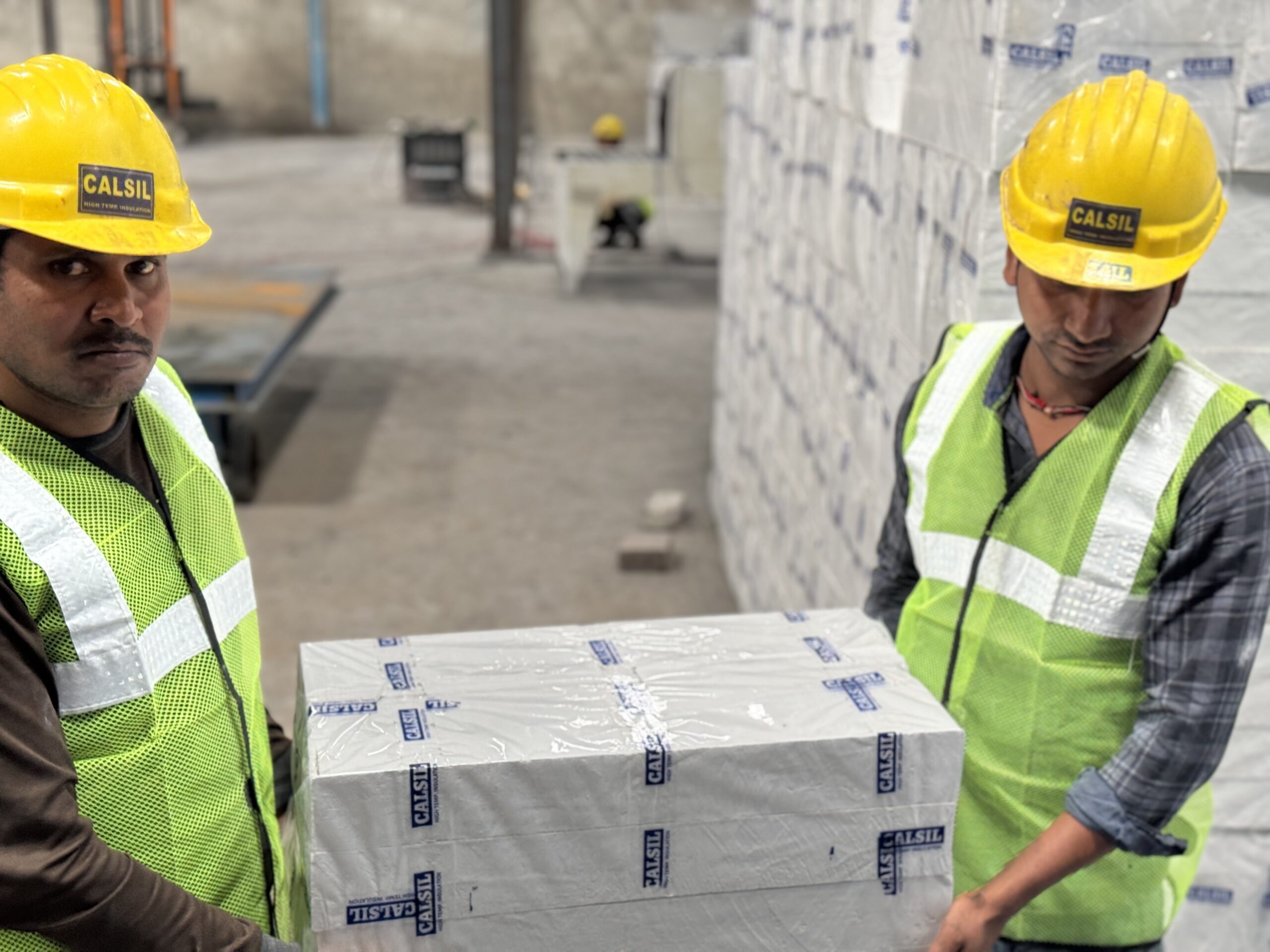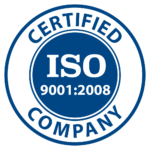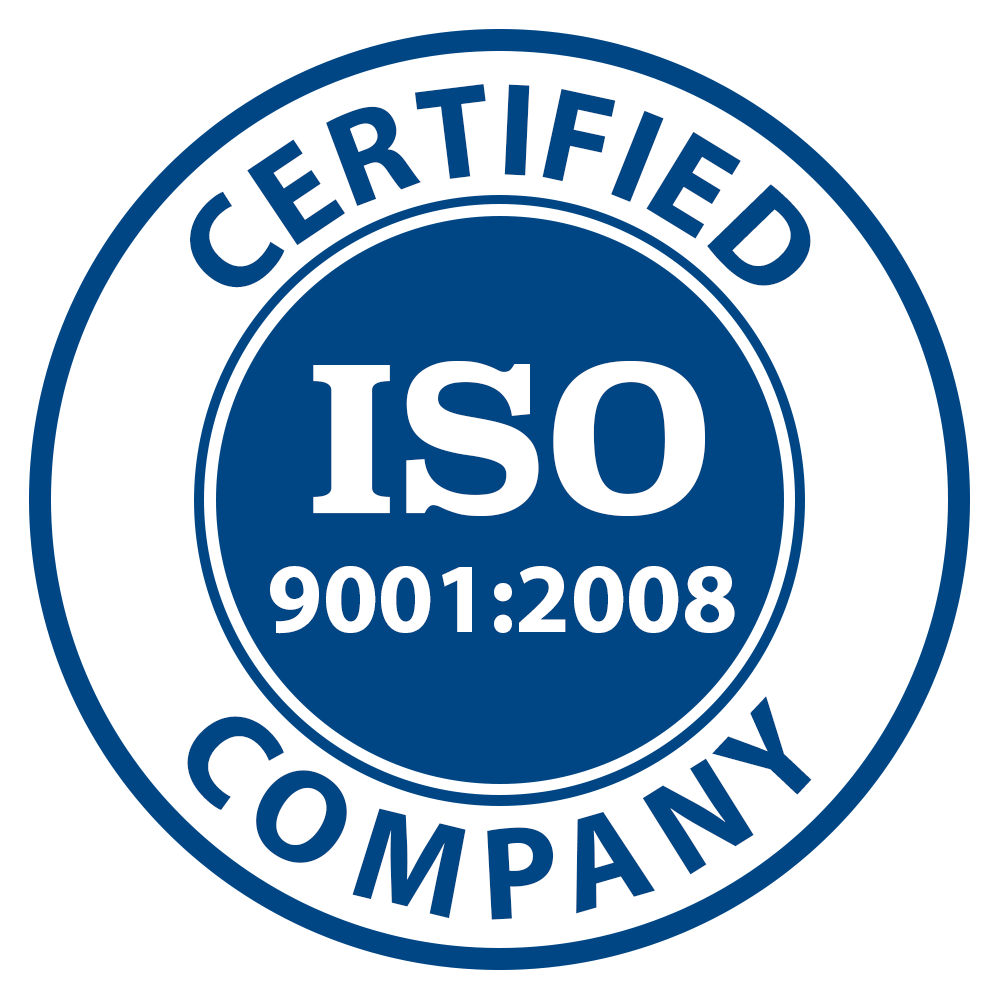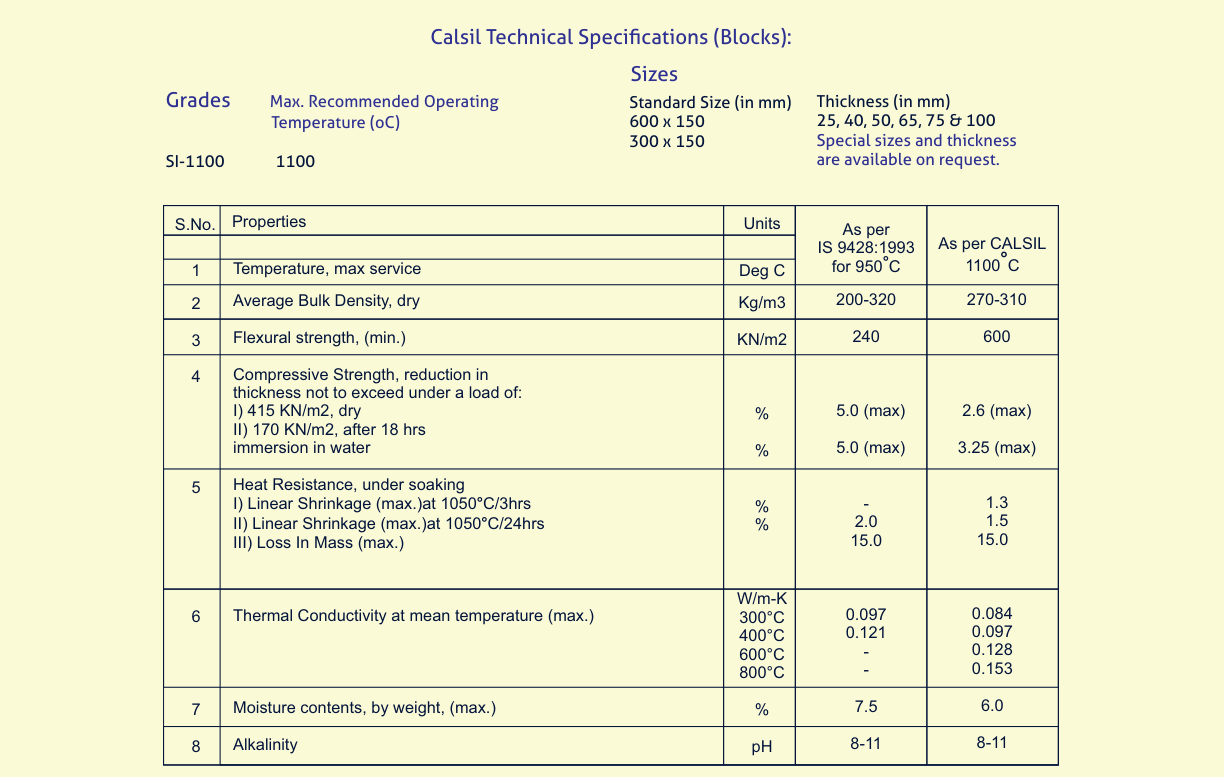Specifications
Fire Safety
CALSIL is non combustible when tested in accordance with BS-476 Part 4. When tested for surface spread of flame test (Large Scale) as per BS-476 part 7 SI1100 is classified as Class One.


Quality Management
Sharda Insulation is recognized for high and consistent product quality. We aim to maintain a value-adding quality management system. We stay ahead because of our:
• At Sharda, we have state of the art laboratory and QC policies to keep a close track on the quality of the product.
• Value-adding processes management. This includes determination and follow-up on operational targets, based on analysis of data and information received from the processes and the market
• Development of product properties based on demands and specific applications of the customers.
• Continuous improvement of the effectiveness of quality management.
Material Safety Data Sheet
Access essential safety information with our comprehensive Material Safety Data Sheets (MSDS).
Ensure safe handling, storage, and application of our high-temperature insulation materials.
Chemical Composition
General : Hydrothermal Calcium Silicate with Mineral Silicate fibers and reinforcing fibers. The material is completely asbestos free.
Typical Composition : Natural Calcium/ Aluminum Silicate : 5 – 10%
Cellulose Fibers :2 – 5 %
Hydrothermal Calcium Silicate :Balance
Boiling Point :N/A (solid at high temperature)
Vapour Pressure :Insoluble (less than 0.1g/L)
Water Solubility :9.0 – 9.5
Ph :N/A
Evaporation rate : >1400
Melting Point : ℃
Fire Fighting Measures
Flash Point: Not applicable
Upper Flammable Limit (UFL): Not determined
Auto Ignition: Non combustible
Rate of Burning:Not applicable
Method Used: Not applicable
Lower Flammable Limit (LFL): Flammability Classification: Non combustible
There is no potential for fire or explosion.
Use any extingushing media appropriate for the surrounding fires.
First Aid Measures
Remove to fresh air. Drink water to clear throat, and blow nose to remove dust.
Wash gently with soap and warm water to remove dust. Wash hands before
eating or using the rest room.
this product may cause gastrointestinal irritation; rinse mouth and drink water to alleviate symptoms.
Do not rub or scratch your eyes. Dust particles may cause the eye to be scratched. Flush eyes with large amounts of water for 5-15
minutes. If irritation persists, contact a medical professional.
This product is a mechanical irritant, and is not expected to produce
any chronic health effects from acute exposures.
Chemical Stability & Reactivity Information
This is a stable material. This product is not reactive.
Storage
Warehouse storage should be in accordance with package directions, if any.
Material should be kept dry, and protected from the elements.
Personal Protection
General loose-fitting, long sleeved clothing along with hand gloves should be worn to protect the skin from irritation. Exposed skin areas should be washed with soap and warm water after handling.
Hazards Identification
This product is asbestos-free and safe under normal conditions, but cutting or mechanical alterations may cause dust that can lead to temporary respiratory, skin, or eye irritation. Proper precautions like fresh air, washing, and eye flushing are recommended if exposed.
Breathing dust from this product may cause a scratchy throat, congestion, and slight coughing. Getting dust or fibers on the skin, or in the eyes may cause itching, rash, or redness.
Toxicological Information
General Product Information: The primary acute health effects of this product include mechanical irritation of the skin and eyes and skin dryness as a result of contact with dust and fiber.
General Product Information: OSHA, NTP, IARC, and ACGIH have not classified this product in its entirety as a carcinogen
Accidental Release Measures
Pick up large pieces. Vacuum dust. If sweeping is necessary, use a dust suppressant such as water. Do not dry sweep dust accumulation or use
compressed air for clean-up. These procedures will help to minimize potential exposures
Wastes are not hazards as defined by the RCRA (40 CFR 261). Comply with state and local regulations for disposal of these products


Certification
We Are Certified


